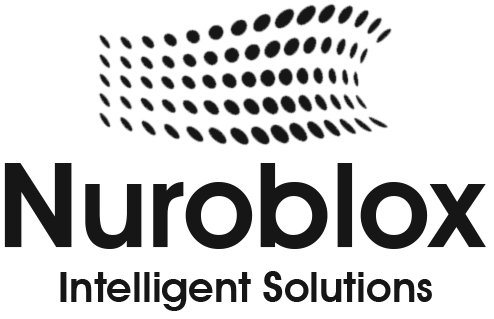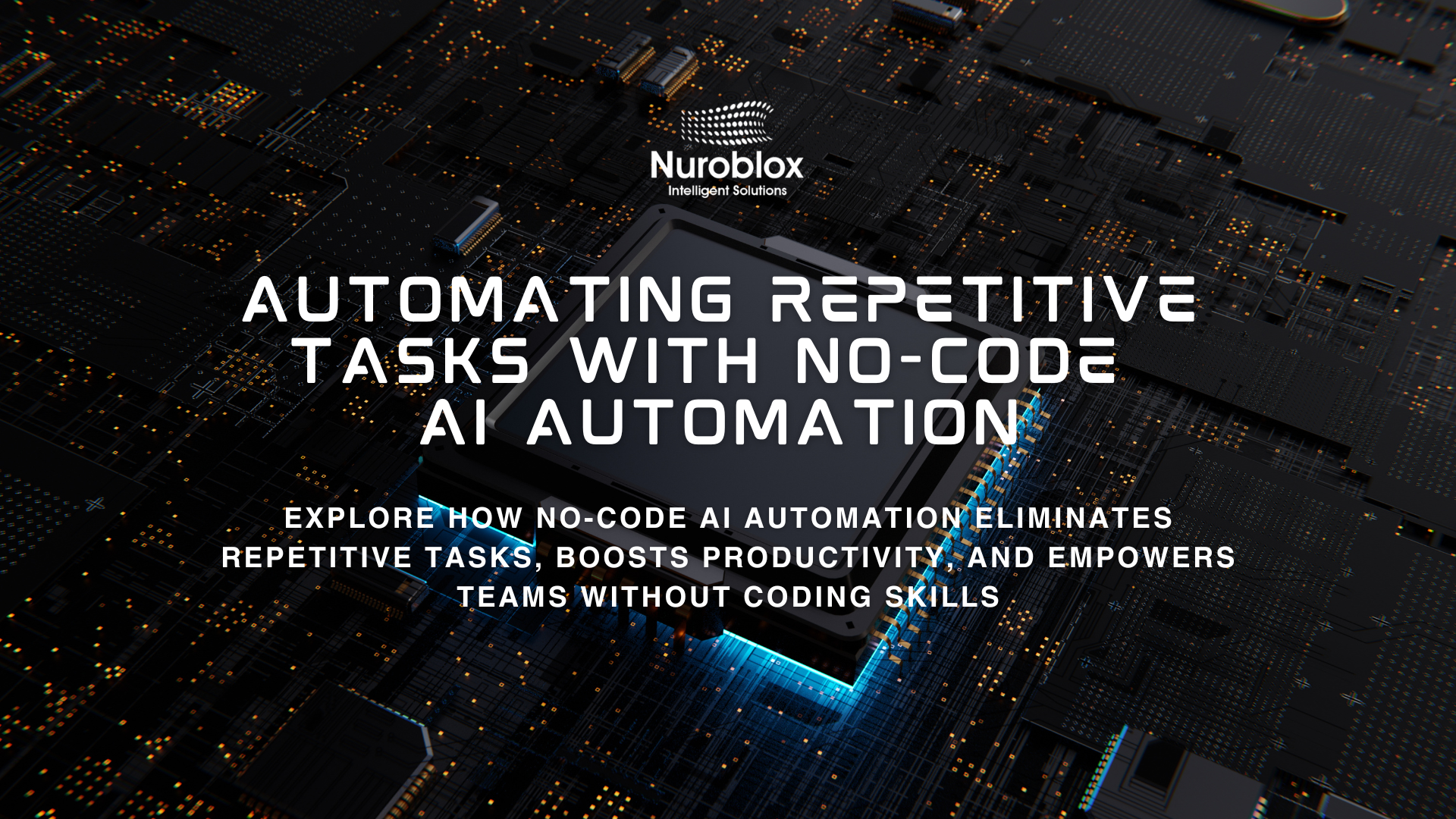Automating Repetitive Tasks with No-Code AI Automation
Repetitive tasks are the silent productivity killer within organizations. From data entry to report generation, teams often spend hours every week on manual, rule-based processes that offer little strategic value. According to a McKinsey Global Institute report (2023), nearly half of all work activities have the potential to be automated with current technologies. Yet the barrier has often been technical expertise many enterprises cannot dedicate developers to customize automation solutions for every process.
This is where no-code AI automation has emerged as a game-changing enabler. By combining artificial intelligence with no-code or low-code platforms, enterprises can empower business users to build smart automations without writing a single line of code. As a result, repetitive tasks are handled swiftly and intelligently, freeing employees to focus on innovation, customer engagement, and decision-making.
In this article, we will explore how no-code AI automation works, the benefits it creates, real-world use cases, adoption challenges, and best practices for enterprises looking to embrace it.
What is No-code AI Automation?
No-code AI automation refers to platforms and tools that allow organizations to design, build, and deploy intelligent automated workflows without needing programming skills. These tools often feature-
- Drag-and-drop workflows to visually define processes.
- AI-powered components such as natural language processing (NLP), document understanding, or predictive analytics.
- Pre-built integrations with enterprise software (CRM, ERP, collaboration tools).
- Rule-based and cognitive automation to handle structured tasks as well as tasks requiring human-like decision-making.
Unlike traditional robotic process automation (RPA) which focuses on structured tasks, no-code AI automation can handle unstructured tasks at scale because it leverages machine learning, natural language understanding, and computer vision.
Why Enterprises Need No-Code AI Automation
Rising Complexity of Business Workflows
Enterprises often run on a patchwork of legacy and cloud systems. Creating automation through code for each process is time-consuming and expensive. No-code AI platforms democratize automation by allowing non-technical staff to automate workflows across departments.
Talent Shortages in Software Development
According to Gartner’s “Future of Low-Code Development” (2023), by 2026, 80% of technology products and services will be built by people outside IT teams. With skilled developers in high demand, no-code platforms enable organizations to distribute automation capability across functional teams without waiting on IT backlogs.
Improving ROI of Automation Investments
Traditional automation initiatives often stall because of high upfront investment. No-code AI lowers costs through rapid deployment and scalability, helping enterprises realize ROI faster while continuously iterating processes.
Key Benefits of No-Code AI Automation
| Benefit | Detail |
| Faster Time to Value | Business users can deploy workflows within days instead of months. |
| Reduced Operational Costs | Automating repetitive tasks lowers labor costs and reduces human errors. |
| Scalability Across Functions | From HR to finance to operations, automation can quickly extend enterprise-wide. |
| Enhanced Decision-Making | AI insights allow processes to go beyond rule execution and adapt intelligently. |
| Improved Employee Engagement | Staff can focus on value-driven, creative, and customer-facing tasks instead of drudgery. |
Real-World Use Cases of No-Code AI Automation
Finance and Accounting
- Invoice Processing- Extracting structured data from invoices using AI-driven OCR and auto-validating against ERP records.
- Expense Reporting- Automating approvals, anomaly detection, and flagging policy violations.
HR and Talent Management
- Resume Screening- NLP-based candidate screening, ranking, and shortlisting.
- Onboarding Workflows- Automating IT access, document submission, and compliance training assignments.
Sales and Customer Engagement
- CRM Updates- Automatically logging emails, calls, and follow-ups in CRM systems.
- Customer Query Automation- AI-powered chatbots handling routine service requests.
IT and Operations
- Help Desk Automation- Resolving common tickets such as password resets.
- Intelligent Monitoring- AI-driven anomaly detection in server logs or application performance.
Telecommunications and IT
- Network Operations- AI orchestrates monitoring tools, anomaly detection engines, and automated provisioning for service reliability.
- Customer Service- Integrates voice AI, chatbots, knowledge base, and escalation processes.
Business Benefits of AI Orchestration

No-code AI automation is powerful, but its adoption requires careful planning. Challenges enterprises often face include-
- Governance and Compliance- Business users might unintentionally build workflows that violate compliance if governance is weak.
- Integration at Scale- While no-code tools have pre-built connectors, niche legacy systems may still pose integration hurdles.
- Over-Reliance on Citizen Developers- Without oversight, fragmented automations can lead to redundancy and maintenance headaches.
- AI Explainability- AI-driven automation decisions need transparency especially in regulated industries like finance or healthcare.
Future of AI Orchestration in Business Process Automation
The next five years will see orchestration evolve beyond basic coordination. Key emerging trends-
- Hyperautomation with AI Orchestration – Gartner forecasts that by 2026, over 80% of enterprises will adopt orchestration as part of hyperautomation initiatives (Gartner, Predicts 2023: Hyperautomation).
- Autonomous Process Orchestration – AI systems dynamically designing, testing, and deploying workflows without human intervention.
- Federated Orchestration Models – Multiple AI orchestrators collaborating across cloud, edge, and on-premise environments.
- Integration with Generative AI – Orchestration leveraging generative AI for adaptive workflows, predictive analytics, and dynamic documentation.
- Composable Enterprises – Organizations building modular business capabilities orchestrated in real time.
Best Practices for Implementing No-Code AI Automation
- Start with High-Impact Processes- Identify tasks that are repetitive, high-volume, and rule-based for quick wins.
- Establish Clear Governance Models- Define approval workflows and governance over who can build and deploy automations.
- Balance Centralized and Decentralized Ownership- IT can provide the guardrails, while business teams design the workflows.
- Invest in Training and Upskilling- Employees should understand how to design workflows responsibly.
- Measure ROI Continuously- Set KPIs such as time saved, error reduction, and customer satisfaction to demonstrate value.
The Future of Work with No-Code AI
The rise of no-code AI automation is more than an operational shift, it represents a cultural change in the workplace. By shifting routine work to intelligent systems, enterprises unlock workforce creativity and strategic agility. The long-term vision is not just about reducing costs but creating adaptive enterprises where employees collaborate with intelligent systems to deliver continuous innovation.
Conclusion
No-code AI automation is redefining enterprise productivity by making intelligent automation accessible to everyone, not just developers. From HR to finance to IT operations, it is helping enterprises scale efficiency, reduce costs, and improve decision-making. The organizations that succeed will be those that pair automation adoption with governance, training, and continuous measurement of business impact.



